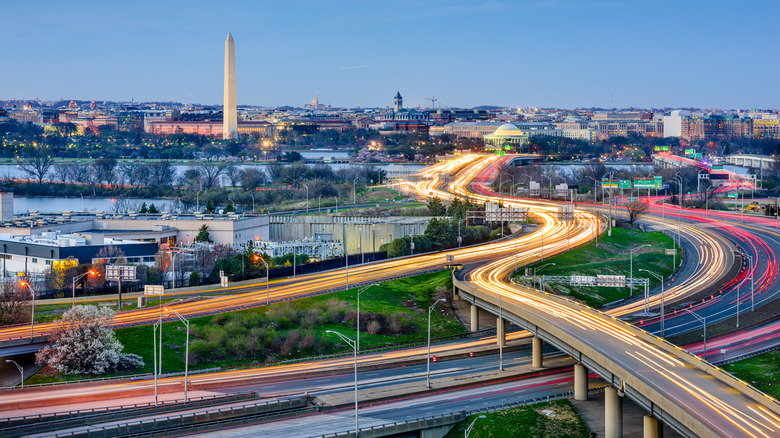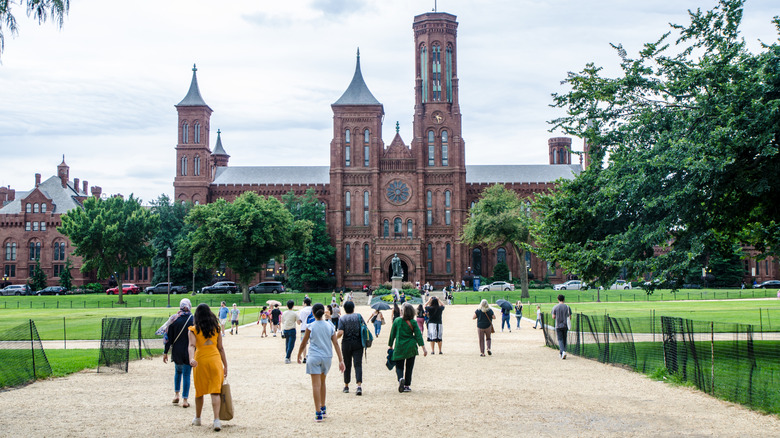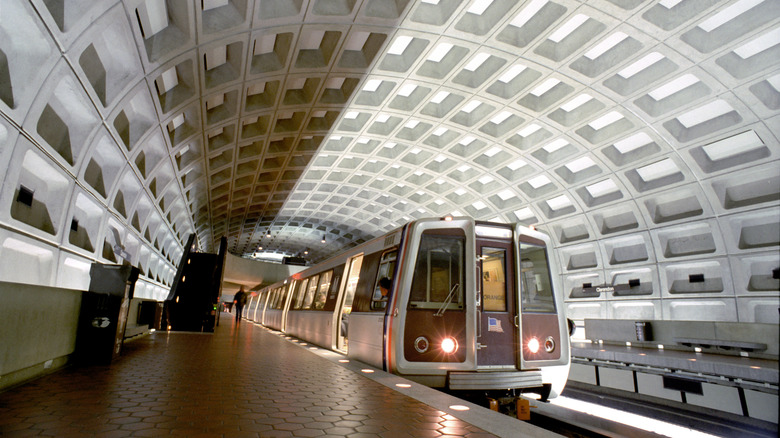Why Tourists Visiting This Major US City Should Avoid Getting Around By Car
No reason to mince words: Washington, D.C. is a hellacious place to drive. The moment you enter the nation's capital, you're subject to a bizarre system of quadrants, numbers, and lettered streets; this may sound organized in theory, but it turns into alphabet soup when you're fighting through the city's infamous gridlock. Just when you think you're getting the hang of things, you stumble into one of the avenues, which cut diagonally through town and are named after random US states. Once you adjust to that, you still have to contend with more than 30 traffic circles; these often take the shape of attractive urban parks, and they're reputed to calm traffic, but navigating each roundabout can be a hair-raising experience, and one wrong turn could send you in a hopelessly incorrect direction.
D.C.'s dismal reputation isn't just anecdotal: According to a 2025 report in Consumer Affairs, the District now has the worst road congestion of any city in the country, beating out such traffic nightmares as New York, Atlanta, and Los Angeles. This can be frustrating for first-time visitors, who spend countless minutes stuck at red lights. Street parking costs as little as $2.50 per hour, but good luck finding an available space and meter. Garage rates surge from at least $10 as you approach the city center. Many of these problems worsen after dark, which is too bad, because at least five tourist attractions in Washington, D.C. are better to visit at night.
Why is driving in D.C. so awful? And how should you get around instead? The bad news is, the District of Columbia was basically planned this way. The good news: There are lots of options for exploring this dynamic town.
Washington, D.C.: a city built for people
What many don't realize is that Washington, D.C. was a planned city. Very little existed here before French engineer Pierre L'Enfant was commissioned to design the capital from the ground up in the early 1790s. This process was rocky; L'Enfant resigned from the project, citing differences with city commissioners. Most government buildings were burned to the ground during the War of 1812, and had to be rebuilt. All this took place a century before the automobile, so the city was effectively designed for horses and foot traffic.
In 1910, the Height of Buildings Act forbade any structure taller than 130 feet; today, there are no skyscrapers to use as reference points. While it's hard to imagine now, the city once boasted 200 miles of streetcar tracks, which operated continuously between the 1880s and 1961. Riots overtook the city in 1968, after the assassination of Dr. Martin Luther King Jr., which caused widespread destruction, and the city endured decades of blight. Today, gentrification has blown up across it, transforming neighborhoods.
In short, Washington may have been calmly laid out on paper, but the District of Columbia has radically transformed over the years, and automobiles weren't part of L'Enfant's vision. When the 64-mile Capital Beltway was finished in the 1960s, it flooded the streets with commuters from Maryland and Virginia, plus untold numbers of tourists. At present, the population within city limits swells from 600,000 to 1 million people each business day, and a huge percentage of them drive.
How to get around Washington, D.C.
Luckily, D.C. has some of the best mass transit in the country, thanks to its WMATA metro system. The metro is generally considered clean and quiet, and many stations have arched concrete ceilings, like modernist cathedrals. The simple map is easy to figure out, and the color-coordinated lines will transport you across the District as well as parts of Maryland and Virginia. More than 600,000 people ride the metro every day, including many smart tourists, who can stay in affordable suburban hotels.
D.C. is also a fantastic place to walk around, just as L'Enfant intended some 230 years ago. There are frustrating reasons why cities in America are not walkable, yet D.C. still has wide sidewalks, level topography, and vast parks, including the National Mall, one of the finest urban green spaces in the country. Despite the traffic, D.C. is considered one of the most walkable US cities, where you don't need a car. Most famous D.C. landmarks, such as the White House, the Capitol building, the Lincoln Memorial, the Vietnam Memorial, and most of the Smithsonian are located within easy strolls of each other. If you get tired crisscrossing the city center, taxis and ride-shares are plentiful — although you'll still have to contend with traffic.
An increasingly great option is cycling; to date, the city has installed 24 miles of separated bicycle lanes, and D.C. has become a hub for several major bike tour routes, including the 185-mile C&A Canal towpath and the 3,000-mile East Coast Greenway. Download the app, and you can quickly borrow a ride from the Capital Bikeshare network. Driving in D.C. may have gotten worse, but for savvy travelers, the capital is easier to get around than ever.


